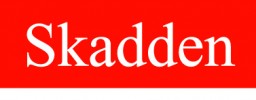On April 11, 2024, the United States Patent and Trademark Office (USPTO or Office) published new guidance on the use of artificial intelligence (AI) based tools in connection with preparing and prosecuting patent and trademark applications, and other filings before the USPTO. The guidance covers how use of AI interacts with patent and trademark practitioners’ duties and obligations before the USPTO in various contexts.
Notably, the guidance does not issue any new rules, or amend any existing rules, as the USPTO determined its existing rules and procedures are sufficient to address the potential risks associated with the use of AI-based tools. The guidance does, however, provide inventors, practitioners and other stakeholders with much-needed direction for interpreting existing rules and procedures in the context of AI, in order to ensure compliance with the Office’s standards and expectations.
Background
This guidance follows the “Executive Order on the Safe, Secure, and Trustworthy Development and Use of Artificial Intelligence” (AI EO) issued by President Biden on October 30, 2023, which instructed the Office to issue guidance addressing both inventorship and the use of AI (including generative AI) in the inventive process, as well as any additional considerations for patent examiners and applicants at the intersection of AI and IP.
The USPTO issued earlier guidance on the use of AI in the inventive process on February 13, 2024. See our March 25, 2024, client alert “New Developments Help Clarify Intersection of Patent Law and Artificial Intelligence.”
This most recent guidance also follows a February 6, 2024 memorandum from USPTO Director Katherine Vidal to the Patent Trial and Appeal Board (PTAB) and the Trademark Trial and Appeal Board (TTAB) that stressed the importance of protecting the integrity of the USPTO’s existing rules and regulations when AI is used by practitioners and others that are before the PTAB and TTAB.
The latest guidance highlights that, while the recent proliferation of AI-based tools can be beneficial to legal professionals and others that practice before the USPTO, the risks posed by overreliance on AI threaten practitioners’ ability to comply with the Office’s standards and expectations. As examples of the risks, the guidance highlights outputs that include critical misstatements or omissions, or legal briefs with fictionalized citations and quotations, as well as risks posed by sharing sensitive or confidential client information with AI-platforms.
Clarification of Existing USPTO Rules and Procedures
The guidance first clarifies certain of its existing rules that give rise to obligations relating to the use of AI in connection with patent applications.
- Duty of good faith and candor before the Office.1 The guidance reminds readers that the duty of good faith and candor applies to all interactions with the Office, including filing petitions, or filing a response to an office action, including the duty to “disclose to the Office all information known to that individual to be material to patentability.”
- Signature requirements and corresponding certifications.2 The guidance states that signature requirements and corresponding certifications before the USPTO require a practitioner’s own signature, and that the duty of reasonable inquiry3 requires that a signatory ensures that a paper “is not being presented for any improper purpose, the legal contentions are warranted by law, the allegations and other factual contentions have evidentiary support, and the denials of factual contentions are warranted on the evidence.”4
- Confidentiality rules and additional obligations. The guidance discusses the confidentiality rules, including the requirement that “[a] practitioner shall not reveal information relating to the representation of a client unless the client gives informed consent” or the disclosure falls within other exceptions.5
Application of the Existing Rules to AI
The guidance next addresses how the foregoing rules specifically apply in the context of AI use by practitioners, including when drafting documents, making filings and using the USPTO information technology systems. It also discusses considerations of confidentiality and national security, as well as fraud and intentional misconduct.
The key takeaways are:
- Document drafting. For practitioners that intend to use AI in connection with drafting documents, the guidance stresses that, while “there is no prohibition against using these [AI] computer tools in drafting” or “a general obligation to disclose to the USPTO the use of such tools,” practitioners should bear in mind certain procedures when using AI in connection with drafting documents:
- Submissions and correspondence with the USPTO. The party that is presenting the paper must have reviewed and verified the paper and its contents; simply “relying on the accuracy of an AI tool” is not a “reasonable inquiry” sufficient to meet the signature requirements under the CFR. In particular, the guidance stresses concerns with AI’s potential to omit, misstate or hallucinate information.
- Additional patent examples. The duty of candor and good faith requires the disclosure of certain facts relevant to patentability, such as significant contribution by a human inventor. The guidance states that practitioners should therefore make sure to verify specifications written with the assistance of AI to ensure compliance with the specification provisions of 35 U.S.C. 112. In addition, the guidance states that practitioners must verify the accuracy of any evidentiary submissions prepared with the assistance of AI.
- Trademark-specific guidance. The guidance specifically addresses certain unique considerations regarding submissions before the TTAB. In particular, the guidance notes that any submissions before the TTAB made with the assistance of an AI system must be reviewed for accuracy and evidentiary support. For example, the guidance states that practitioners should take care to “avoid submitting any AI-generated specimens, which do not show actual use of the trademark in commerce, or any other evidence created by AI that does not actually exist in the market place.”
- Filing documents. The guidance clarifies that filings must be signed by a real person, not an AI tool. In addition, the guidance states that a practitioner cannot use an AI tool to obtain a USPTO.gov account to make filings on the practitioner’s behalf.
- Accessing USPTO IT systems. The guidance clarifies that an AI system cannot be considered an authorized “user” of USPTO IT systems for the purposes of filing documents or accessing information. In addition, the guidance states that use of AI systems to “data mine” information in an unauthorized manner from the USPTO’s electronic systems may subject the user to criminal and civil penalties. The guidance recommends that users instead use the USPTO’s proprietary bulk data products if they wish to engage in “permitted and appropriate data mining efforts.”
- Confidentiality and national security. The guidance makes clear that practitioners relying on third-party-developed AI tools must be vigilant to ensure that the confidentiality of client data is maintained. Further, it warns that disclosure of client data from AI tool use can implicate national security, export control and foreign filing license issues, particularly where the AI tools use foreign-hosted servers.
- Fraud and intentional misconduct. The guidance makes clear that AI-based violations of the duty of candor and good faith can amount to fraud or intentional misconduct of the practitioner using the AI on its behalf. Further, the guidance cites to the Terms of Use for USPTO Websites to state that the use of AI tools that results in the “unauthorized access, action, use, modification or disclosure of data contained in the websites or to transit to/from the USPTO web system” constitutes a violation of the Computer Fraud and Abuse Act. Note, however, that neither the guidance nor the Terms of Use further delineate which conduct, with or without AI, would constitute a violation.
Summary
In this guidance, the USPTO acknowledges that the recent proliferation of AI-based tools can be beneficial to legal professionals and others that practice before the USPTO. However, it also focuses on the risks posed by overreliance on AI (such as, outputs with critical misstatements or omissions, or legal briefs with fictionalized citations and quotations) as well as those that can arise from sharing sensitive or confidential client information with AI-platforms, stressing the importance for practitioners using AI to ensure they are compliant with the Office’s standards and expectations. Practitioners must make sure to carefully review any work created with the assistance of AI and ensure that their use complies with their preexisting duties and obligations before the Office.
The guidance notably does not issue new rules and regulations that are specifically tailored to the AI context, consistent with the approach taken by the Copyright Office. See our March 6, 2023, client alert “Copyright Office Issues Guidance on AI-Generated Works, Stressing Human Authorship Requirement.”
The USPTO states it will continue to engage with the public on this topic as the use of AI advances and evolves. Companies and practitioners seeking to leverage AI-based tools should therefore closely monitor developments in both AI technology and statements by the USPTO in order to ensure compliance.

____________________
1 37 CFR 11.202.
2 37 CFR 11.18(a).
3 37 CFR 11.18(b)(2).
4 MPEP 2002.02.
5 37 CFR 11.106(a).
This memorandum is provided by Skadden, Arps, Slate, Meagher & Flom LLP and its affiliates for educational and informational purposes only and is not intended and should not be construed as legal advice. This memorandum is considered advertising under applicable state laws.





